12 Content Marketing Ideas

Hand off the toughest tasks in SEO, PPC, and content without compromising quality
Explore ServicesIf you’re looking for new and innovative ways to take your content marketing to the next level, this guide is for you.
From pitching journalists to repurposing content, you’ll find 12 killer content marketing ideas to help you better engage your audience and drive the results your hard work deserves.
12 Content Marketing Ideas
Are you struggling to create content that’s engaging and drives results?

No matter. We’ve got your back.
1. Setting Content Marketing Goals: Tips That’ll See You Succeed
Setting content marketing goals is one of the most important steps in a successful campaign. Sure, it can be a tough gig putting together comprehensive content marketing strategies that are both effective and budget-friendly.
But it’s definitely not impossible.
Start by thinking about what you want to achieve with your content marketing. Do you wish to increase website traffic? Boost leads or sales? Improve brand awareness? All of these are valid goals, but you need to be specific about what you want to accomplish.
To help direct your content marketing goals in the right direction, consider using the SMART model:
- Specific goals are laser focused on what you want to achieve.
- Measurable goals can be quantified so you can track your progress.
- Achievable goals are realistic and within your reach.
- Relevant goals are both relevant to your target market and fit within your overall objectives.
- Time-bound goals have a specific deadline for completion.
Putting all of these elements together will help create effective and successful goals. Remember, Rome wasn’t built in a day, and your content marketing strategy won’t be either.
2. Content KPIs: Measure the Business Value of Your Content
Once you have your content marketing goals in place, now comes the measuring part. How will you track whether your goal has been reached? Is there a metric you can use to quantify the results?
Key performance indicators (KPIs) are a great place to start.
KPIs are metrics that can be used to track progress and assess the effectiveness of a campaign or strategy. The most important KPIs to content marketing include:
- Revenue. One of the most important KPIs for content marketing is revenue. This can be measured by tracking the number of leads or customers that are directly attributable to a single piece of content or an entire campaign.
- Brand awareness. Another key metric to keep an eye on is brand awareness. You can measure brand awareness by tracking how much traffic your website or blog is getting, how many shares your content has on social media, and how many leads are coming from branded keywords.
- Customer loyalty. Customer loyalty is measured by how likely customers are to return to your site and buy from you again. Loyal customers are more likely to refer others to your business, which will undoubtedly help to increase traffic and sales.
- Customer engagement. One of the most important KPIs is customer engagement. You can track customer engagement by measuring certain metrics like page views, time on site, and bounce rate.
- Lead Generation. One KPI that is closely tied to revenue is leads generated from content marketing. You can track how many leads are coming from your website, blog, social media posts, and other content channels. This will help you determine which channels are most effective at driving conversions and generating sales.
Measuring the impact of content marketing can be tricky, but using KPIs can help you track your progress and identify areas that need improvement. By taking note of the right metrics, you can ensure that your content marketing tactics are effective and driving results.
3. Understanding Your Target Market: The Key to Business Success
Your customers are the lifeblood of your business.
Without them, things would quickly go sideways. That’s why it’s so important to take time out to get to know them. Who are they? What do they like? What do they need?
Answering these questions will help you create content that resonates with your audience and helps you close more sales.
How is this achieved?
There are several strategies businesses use to define their target audience. Typically, data and information on a target audience are gathered through customer surveys, tracking, or data analytics.
Here are a few quick tips for tracking and collecting customer data:
- Automated collection. Use marketing automation tools to track website activity and email engagement. This will help you understand what content your customers are interested in and how they interact with your brand.
- Customer surveys. Collect customer feedback through surveys and questionnaires to learn more about their needs and preferences. This information can help you create targeted marketing campaigns that resonate with your audience.
- Social media. Most social media platforms, like Facebook, Instagram, and Twitter, have in-built tools to track customer behavior and engagement. This will help you better understand your target market.
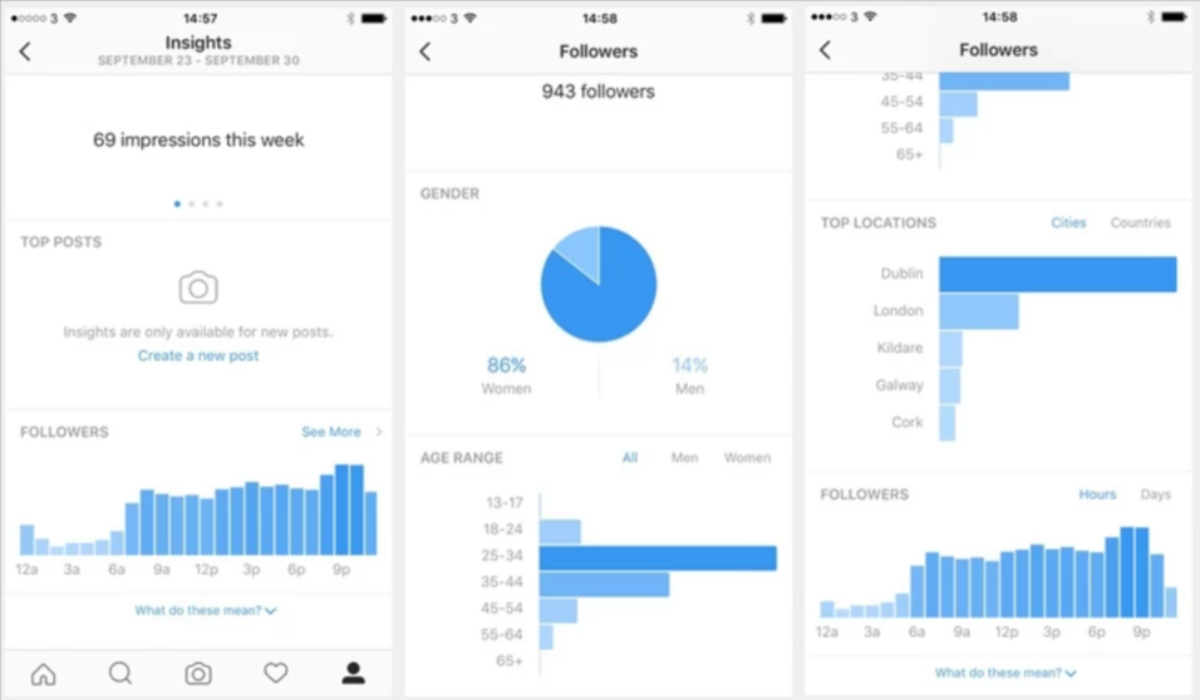
Once you have a basic understanding of your current customer base, you can begin to build a profile for each subsection of your target audience. This process includes studying demographics (location, age, gender), psychographics (lifestyle interests and values), and behavioral data (purchasing habits).
Armed with this information, you can then devise strategies to reach your target audience.
Online advertising, content marketing, search engine optimization (SEO), and email marketing are all methods that can be used to attract potential customers to your business.
For instance, Chris Roth, Founder and CEO of Highline Wellness explains that:
“One unique marketing idea that we use and that has proven successful is to target specific segments of our target audience in each email marketing campaign. For example, we have a specific campaign targeted at repeat customers, a campaign for cold and warm leads, as well as a campaign for previous customers who are yet to pay for our services once more. Each of these campaigns is then further segmented based on the stage that each customer group is at in the buyer’s journey.”
Chris goes onto say:
“Another neat trick we found is to target the different customer segments by season, which allows our email marketing campaigns to be as current, as relevant, and as useful as possible to the audiences we’re targeting.”
So now you’re in the loop.
Get to know the people you’re trying to reach and you’ll be well on your way to business success.
4. Don’t Guess: Map Out Your Buyer’s Journey
As Chris alluded to above, once you’ve grasped an understanding of your target audience, mapping their buyer journey is the next key to success.
Why is this so important?
Well, as you can imagine, your buyers go through different stages as they consider and purchase your product or service. And if you don’t understand those stages, you won’t be able to create content or messaging that speaks to your buyers at each stage.
So what are the different steps of the buyer’s journey?
There are three: awareness, consideration, and decision.
- Awareness. In the awareness stage, the buyer is first becoming aware of the need or problem that they wish to solve. They may be researching different options or just starting to become aware of what is available.
- Consideration. In the consideration stage, the buyer is narrowing down their options and deciding which products or services are best for them. They may be comparing prices, features, and reviews.
- Decision. In the decision stage, the buyer has chosen a product or service and is ready to purchase it. They will be looking for a deal or trying to decide which retailer to buy from.
The cool thing?
You can create content around each of these steps.
For instance, at the awareness stage, the goal is to introduce potential customers to your product or service. This can be done through blog posts, social media posts, or even paid advertising. Content should be informative and interesting, without being too sales-y.
During the consideration stage, potential customers are likely looking for more information about what you offer and how it could benefit them. Content at this stage needs to be more detailed than what was at the awareness stage and should answer any questions buyers may have.
Finally, for the decision stage, the buyer is getting close to making a purchase, so you need to make sure your content is focused and relevant. Offer special deals and discounts, as well as clear call-to-actions (CTAs) that will help close the sale.
What are they thinking? And how can you cater to their needs? By understanding your buyer’s journey, you’ll be able to create a sales process that’s not only tailored to them, but also presents you with the ability to close more sales and create more customers for life.
5. Stand Out From the Crowd: Publish Your Original Research for Increased Engagement
If you want to engage readers and stand out from the crowd, publishing original research is an effective content strategy that has been proven to create significant results. Sure, citing other blogs or content creator’s case studies and personal stories are interesting, but they don’t hold a candle to the data-driven insights you can provide your audience.
So how do you go about this?
Well, depending on your brand and niche, this will look slightly different for every business. Although, in general, when creating a case study, start by identifying a real-world problem that your product or service solves.
As an example of this, we leaned into one of our specialties, local SEO. In this case study, we took 1000+ local SERPs results and ran various analyses to determine outliers or correlations that would make good talking points.
And what did we find?
Well, one of the standout data points we focused on was the correlation between the review rating/review count and a business’s ability to rank high on Google My Business (GMB).
You can see this in the graph we put together below.
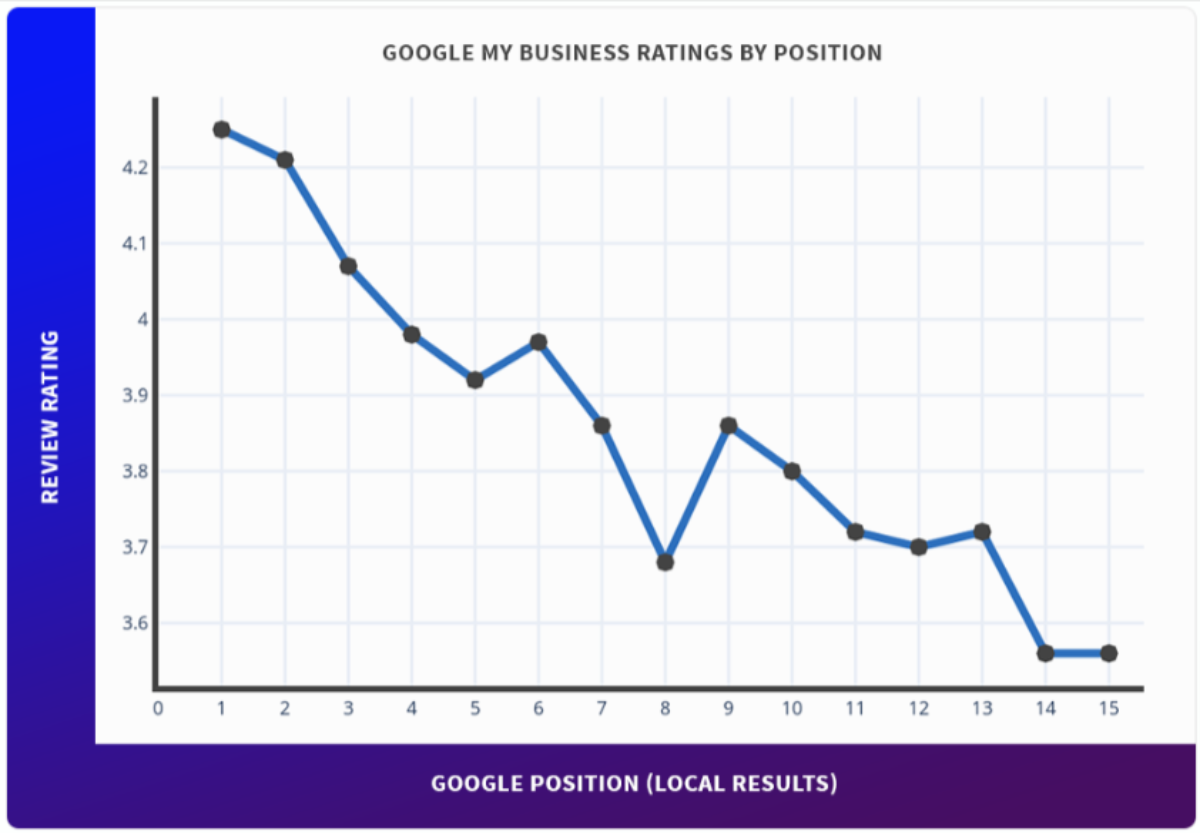
This table further demonstrates our findings and also shows how review count affects GMB rankings.

I realize that these findings may not be of interest to everyone reading this. But if you’re a local business owner, a subset of Loganix’s target audience, this information is incredibly useful. Our case study highlights that if a business owner cannot secure reviews of four stars or above, and many of them, they are going to have a difficult time getting their business noticed on the search engine results pages (SERPs).
Of course, this is just an example.
If you decide creating case studies or publishing original research is up your alley, be sure to leverage the unique insights you can offer your audience. By doing so, you’re offering up information your readers or viewers aren’t likely to find elsewhere, while also positioning yourself as an expert in your field.
Rather than stretch the story over multiple pages, try to keep it concise with a case study one-pager. That way, readers will get your point faster and take the action you’re calling them to.
6. Don’t Let Your Content Collect Dust: Repurpose It for Greater Engagement
A common mistake that content creators make is not repurposing their existing content. You’ve likely spent a lot of time and effort creating a highly informative blog post or infographic, but if it simply sits on your website after being published, its true potential is being wasted.
And if the recent push by Instagram towards video-based content or the unprecedented success of TikTok doesn’t tell us anything about how consumers prefer a mix of different mediums, well, as content marketers, we’re seriously dropping the ball.
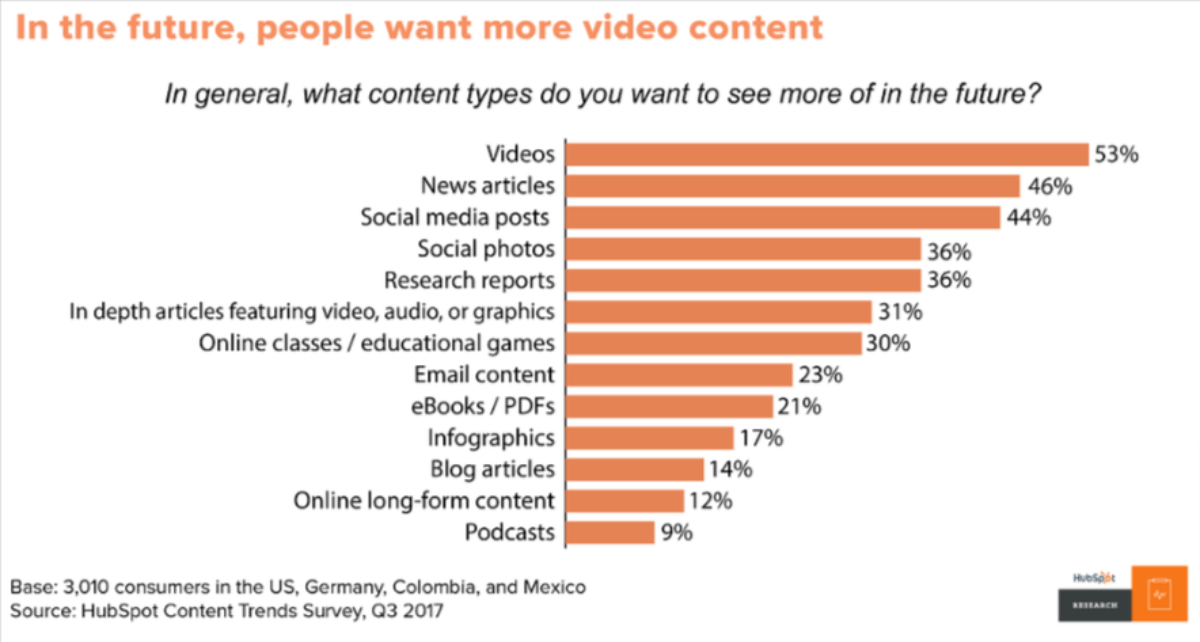
Repurposing content, also referred to as content recycling, can help you achieve greater engagement with your audience. For example, if you have existing blog posts that are performing well on the SERPs, why not create videos based on the topics they cover? Or, if you have an insightful piece of data that your audience would love to know more about, why not share it with your email subscribers or create an attention-grabbing graph and share it on your social media accounts?
By using different formats, you can reach different audiences and get more mileage out of your original content.
Christoph Trappe, director of content strategy at Voxpopme, elaborates:
“We like to throw our content a parade as we know market researchers and marketers are consuming content on a variety of channels. We often start with our market research podcast – ‘Reel Talk: The Customer Insights Show’. The talk-show-style episodes are also live-streamed and feature industry experts.”
Christoph continues by saying,
“From there, we use the content on our market research blog, email campaigns and, of course, social media. This strategy has really helped us get the most out of our content and sets us up to drive results with it.”
Your content is your bread and butter. You pour your blood, sweat, and tears into creating quality content that will engage and inform your audience. So why let it collect dust? Just like the Voxpopme team, breathe new life into your content by adopting repurposing strategies.
7. Never Run Out of Ideas Again: Get the Latest Scoop on HARO
If you’re looking to expand your brand’s reach and establish yourself as an expert in your field, HARO is a great tool to use.
HARO, or help a reporter out, is a free online service that connects journalists with sources for potential stories. Sources, like yourself, sign up to receive queries from journalists. Queries are typically sent out three a day – morning, afternoon, and evening.
So there’s plenty of opportunity to get your voice heard.
By providing quotes and insights to reporters who are working on stories related to your industry, you can get your name and your ideas in front of a much wider audience. In addition, being quoted as an expert by media outlets can help give you credibility and boost your reputation.
Brandon Schroth, the founder of Reporter Outreach, provides further insight:
If you’re looking to get featured on high-value sites like Forbes and Business Insider, I highly recommend using HARO.
Brandon goes on to say:
Most of the time, the reporter will mention your name, your brand name, and include a link back to your website – which is great for SEO in addition to your PR campaign. This is a great strategy for developing valuable backlinks, expanding your thought leadership, and increasing brand awareness.
HARO is a great way to build relationships with reporters and gain exposure for your work. By responding to opportunities as they come up, you can quickly become a go-to source for reporters looking for expert input.
8. Unleash Your Customer’s Creative Side: Grow Your Business with User-Generated Content
In a world where anyone can be a content creator, businesses no longer have to rely entirely on professional writers and videographers to produce all of their marketing materials.
Enter user-generated content.
User-generated content (UGC) is any form of content that is created by unpaid contributors, including consumers, fans, and customers. UGC can take many forms, including blog posts, videos, photos, and social media posts.
Why use UGC?
There are several reasons. First, UGC is often more authentic and trustworthy than professionally produced content. Consumers are more likely to trust what fellow customers say than branded content.
As reported by SocialMediaToday, a survey they conducted found that UGC is viewed as some of the most authentic content by consumers. Just shy of 80% of the respondents claiming UGC highly affects their purchasing decisions, making this type of content 8.7x more impactful than influencer content and 6.6x more than branded content.
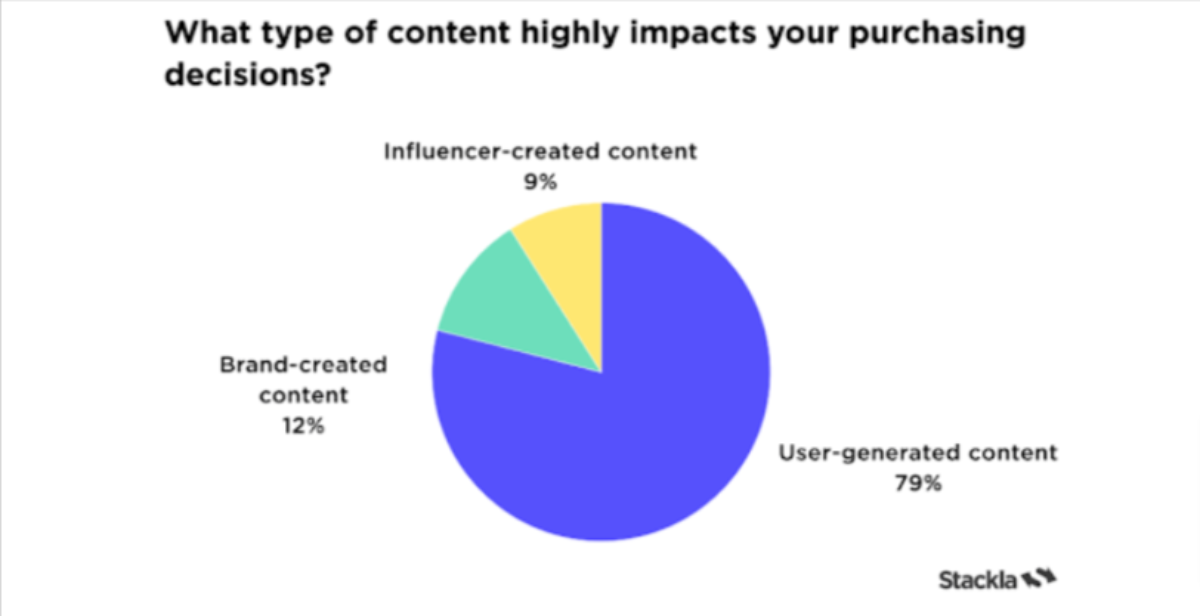
Additionally, UGC is a great way to connect with your customers and fans. When you give your followers a voice, you create a connection with them that can turn into loyalty.
Cierra Loflin, the content community manager at Superpath, an online business that brings fellow content marketers together to network, learn, and grow, explains one of the team’s UGC strategies:
“We’ve had success with a unique user-generated content type called the ‘100k Club’.”
How does the 100k Club work? Cierra explains:
“Content marketers that earn over $100K a year fill out a form anonymously and answer questions about their career journey, first job in content, their most valuable skills, books they recommend, and more. We then re-distribute the published posts to our community Slack group. These posts are motivational and give a framework for fellow marketers wanting to increase their salaries. They also give successful marketers a place to share their stories and ‘humble brag’ without having to publicly share their salaries.”
Just like Superpath, with user-generated content, you can tap into the collective wisdom of your user base to create content that is both relevant and engaging to your target audience.
9. From Memes to Trends: How to Find Content Inspiration on Social Media
Content creators are always looking for new sources of inspiration, and social media can be a great place to find ideas. By following the right accounts, you can see what topics people are talking about and get ideas for content that will resonate with your audience.
Platforms like Twitter, Reddit, and TikTok are full of images and ideas that you can adapt to your own content.
Here are a few tips for using social media as content inspiration:
- Browse the latest trends on various social media platforms. See what’s popular and explore related topics.
- Check out what your favorite brands are posting on social media. See what types of content they’re sharing and get ideas for your own marketing campaigns.
- Follow relevant hashtags and users. This will help you stay up-to-date on the latest trends and topics in your industry.
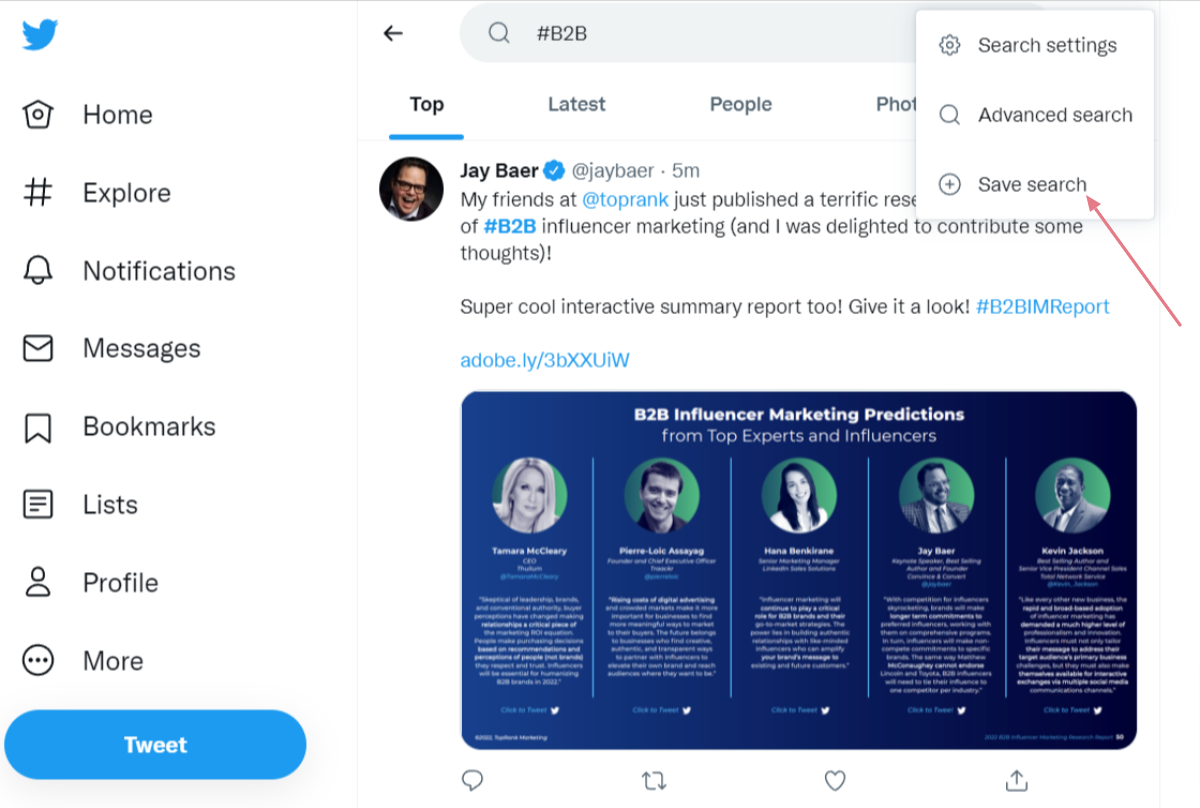
The coolest part?
Social media acts like a positive feedback loop.
By publishing your social media inspired content and monitoring your social media channels, you can see which posts are resonating with your audience and which ones aren’t getting the reaction you were hoping for. This information can help you fine-tune your content strategy and work to inspire more content marketing ideas into the future.
Nobody enjoys feeling stuck, least of all, when it comes to their content strategy. If you’re struggling to come up with new and interesting ideas, look to social media for inspiration. With over 4.6 billion users, there’s bound to be something on there that will get your creative juices flowing.
10. Individualize Your Approach: Craft a Segmented Email Newsletter for Maximum Engagement
One of the most important aspects of content marketing is understanding your audience and promoting content that is relevant to them. This involves customer segmentation, which is the process of dividing your audience into groups based on common characteristics.
And, yes. While generalized content is effective at times, content that’s tailored towards a consumer’s interests, behaviors, and other demographical traits is far superior for engagement.
In other words, segmenting your audience allows you to target specific groups with content that is relevant to them, increasing the chances that they will be interested in what you have to say.
Nicky Taveras, owner of DNT Home Buyers, shares his experience with a segmented email marketing strategy:
“There’s nothing more annoying to a subscriber than receiving newsletters talking about topics they’re not interested in. We know this because we feel the same way when we receive those emails. So the first instinct is to delete or unsubscribe so we receive less of them.”
Nicky’s intuition about generalized emails rings true. According to GetApp, 15.8% of readers will unsubscribe as a result of irrelevant content. He continues,
“To avoid having the same fate when sending emails to my potential clients, I started segmenting their emails based on what they are looking for.”
As a result, Nicky claims,
“My unsubscribe rate has declined greatly because I’m not sending irrelevant information to anyone. Additionally, when they contact me asking me to see homes when they’re finally ready to buy, I can always see what homes they have been interested in, which makes the process much easier.”
So you may ask, what’s the best way to segment customers and tailor email-based content that’s most relevant to their individual interests?
There are several ways to segment your audience.
One popular approach is to group them by their interests. In Nicky’s case, this could mean dividing them into categories such as “sellers”, “renters”, and “home-buyers”. You could also break them down by what stage of the buying process they’re in, such as “interested in learning more”, “in the market for a new home”, and “ready to buy or sell”.
Whatever the case may be, you can’t just blast out the same email to all your email subscribers and expect them to convert. Instead, you’re much better off segmenting your audience and sending them emails tailored to their specific interests or purchasing habits.
11. Spice It Up: Create Interactive Content That’ll Keep Your Audience Hooked
In a world where attention spans are short and people are constantly inundated with information, it’s more important than ever to create interactive content. Interactive content is content that encourages engagement and, well, interaction.
People are naturally curious, so interactive content is a great way to engage them and inspire interest in your brand or product. It also allows you to learn more about your audience, which can help to better target your marketing efforts.
(Insert image 11)
So what kind of interactive content should you create?
There are many types of interactive content that can be used to engage an audience. Some of the most popular types include polls, quizzes, calculators, and maps:
- Polls, particularly popular on social media, are a great way to get feedback from your audience. You can use them to solicit opinions on a new product or to find out what people think about a current issue.
- Quizzes are another popular type of interactive content. They can be used to test people’s knowledge or to help them learn something new.
- Calculators can be used to help people make decisions by providing them with information about the potential outcomes of their choices.
- Maps can be used to show where something is located, or to help illustrate a point. They can also be used as a way to engage your audience and get them involved in the content.
Interactive content is the key to a successful online presence. It allows you to engage your audience and get them involved in what you’re saying. Plus, it’s a great way to get feedback and learn what your audience really wants.
12. Conversions Made Easy: Boost Engagement With Handy Guides, Templates, and Tools
Conversion rates are often a key metric for gauging the success of a website or marketing campaign. However, boosting conversion rates can be tricky, as it often requires understanding complex user behavior and how to design an effective user experience.
It doesn’t have to be this hard, though. There are plenty of handy guides, templates, and tools to help make boosting conversions easy.
One great example of a company that does this well is HubSpot. The Hubspot team has created a Growth Grader tool that helps users keep track of their leads and customer interactions.
However, it doesn’t have to be as complicated as Hubspot’s approach.
As Yanna Berman, the founder of Urban Mamaz explains:
The goal is to offer something that solves someone’s problem. In my case, it was a guide on how to write, publish, and promote your blog using Pinterest. This has been a free offer and the purpose of this is to get more subscribers.
Yanna continues:
The trick is to really find your people, or your audience. The more narrow your niche, the better, even if a few visitors who are not part of that group are interested in your offer as well. The more specific, the better.
So if you’re looking for a surefire way to increase conversions and customer engagement, consider developing or publishing content that is truly helpful to your audience, no matter how narrow the niche.
Summary
There are a multitude of content marketing ideas that can help businesses reach their target audience. By choosing the right mix of content and distribution channels, businesses can connect with their customers and create a lasting relationship.
Better yet, with the right strategy in place, content marketing can be an extremely effective way to grow a business.
If you need help with anything content marketing, be sure to get in contact with the Loganix team today. Here at Loganix we provide a suite of digital marketing services, including PPC, SEO, and link building. Our team of experts uses advanced techniques and strategies to help your business achieve its online marketing goals.
Hand off the toughest tasks in SEO, PPC, and content without compromising quality
Explore ServicesWritten by Aaron Haynes on August 17, 2022
CEO and partner at Loganix, I believe in taking what you do best and sharing it with the world in the most transparent and powerful way possible. If I am not running the business, I am neck deep in client SEO.





